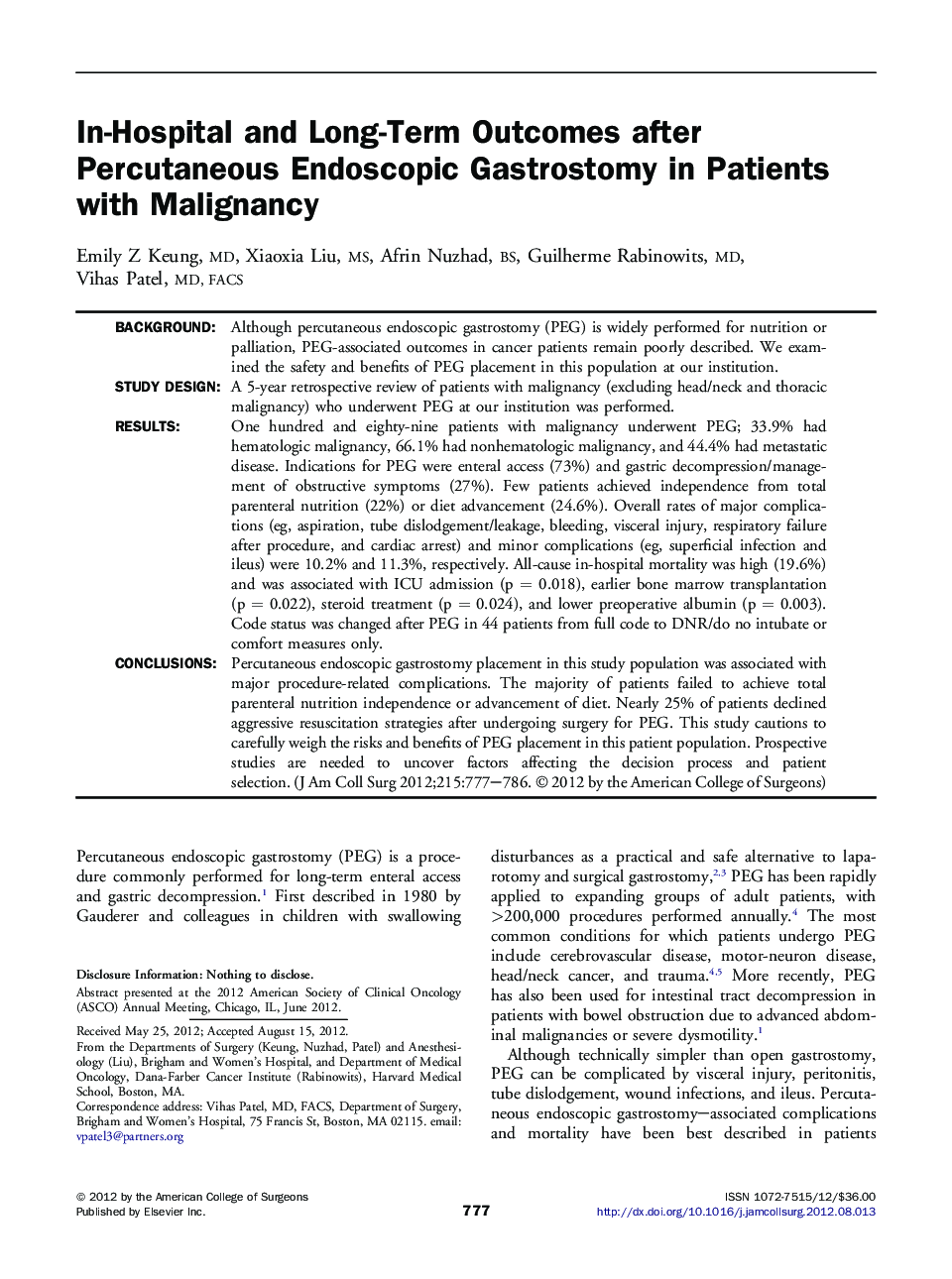| کد مقاله | کد نشریه | سال انتشار | مقاله انگلیسی | نسخه تمام متن |
|---|---|---|---|---|
| 4293180 | 1612252 | 2012 | 10 صفحه PDF | دانلود رایگان |

BackgroundAlthough percutaneous endoscopic gastrostomy (PEG) is widely performed for nutrition or palliation, PEG-associated outcomes in cancer patients remain poorly described. We examined the safety and benefits of PEG placement in this population at our institution.Study DesignA 5-year retrospective review of patients with malignancy (excluding head/neck and thoracic malignancy) who underwent PEG at our institution was performed.ResultsOne hundred and eighty-nine patients with malignancy underwent PEG; 33.9% had hematologic malignancy, 66.1% had nonhematologic malignancy, and 44.4% had metastatic disease. Indications for PEG were enteral access (73%) and gastric decompression/management of obstructive symptoms (27%). Few patients achieved independence from total parenteral nutrition (22%) or diet advancement (24.6%). Overall rates of major complications (eg, aspiration, tube dislodgement/leakage, bleeding, visceral injury, respiratory failure after procedure, and cardiac arrest) and minor complications (eg, superficial infection and ileus) were 10.2% and 11.3%, respectively. All-cause in-hospital mortality was high (19.6%) and was associated with ICU admission (p = 0.018), earlier bone marrow transplantation (p = 0.022), steroid treatment (p = 0.024), and lower preoperative albumin (p = 0.003). Code status was changed after PEG in 44 patients from full code to DNR/do no intubate or comfort measures only.ConclusionsPercutaneous endoscopic gastrostomy placement in this study population was associated with major procedure-related complications. The majority of patients failed to achieve total parenteral nutrition independence or advancement of diet. Nearly 25% of patients declined aggressive resuscitation strategies after undergoing surgery for PEG. This study cautions to carefully weigh the risks and benefits of PEG placement in this patient population. Prospective studies are needed to uncover factors affecting the decision process and patient selection.
Journal: Journal of the American College of Surgeons - Volume 215, Issue 6, December 2012, Pages 777–786